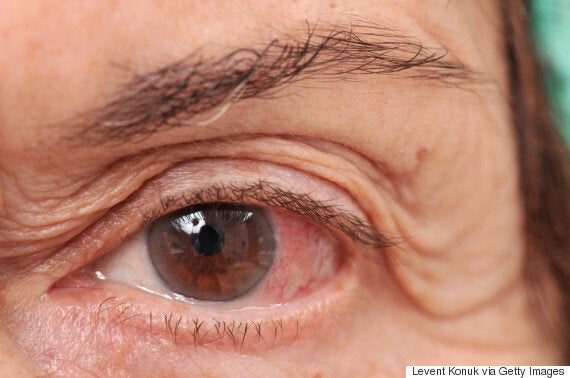It's estimated that more than 500,000 people have glaucoma in England and Wales, yet many more people may be living with the condition.
Any damage to the eyes cannot be reversed, so early diagnosis of glaucoma is vital.
With that in mind, here is everything you need to know about the eye condition in order to get the treatment you need, fast.

What is glaucoma?
Glaucoma is a condition that affects sight and is usually caused by a build up of pressure within the eye, according to the NHS.
"The eyeball contains a fluid called 'aqueous humour' which is constantly produced by the eye, with any excess drained though tubes," the NHS website explains.
"Glaucoma develops when the fluid cannot drain properly and pressure builds up, known as the intraocular pressure."
Intraocular pressure can damage the optic nerve, which sends signals from the eye to the brain.
What are the symptoms?
"For the most common type of glaucoma in this part of the world (open angle glaucoma), there are no warning signs at all," Paul Kinnear, consultant ophthalmologist at the Bupa Cromwell Hospital tells HuffPost UK Lifestyle.
"While this won’t cause problems in the short term, continued high pressure on the nerve causes damage to the peripheral vision, in a way that can’t be detected by the individual."
Because of this, it's important that opticians and ophthalmologists measure the pressure in the eye and do a visual field test during examinations, in order to spot the condition.
But another, more rare type of glaucoma, called narrow angle glaucoma, does have symptoms.
"Early warning signs include seeing haloes around lights in the early evening, accompanied by a mild headache or ache around the eyeball," Kinnear says.
He adds that symptoms for a third type of glaucoma, called angle closure glaucoma, occur when the pressure in the eye becomes very high, very quickly.
"This can result in severe pain, nausea, vomiting and very blurred vision and tends to affect the elderly and those who are very long-sighted," he says.
Who is at risk?
Age is a significant risk factor for glaucoma as it affects around 1% of people in their 40s and up to 15% in the 80s, according to Bupa statistics.
"The main additional risk factor for glaucoma is having a parent with glaucoma which increases the overall lifetime risk of glaucoma to around 20%," Kinnear adds.
Previous research has also suggested women with low oestrogen levels may have an increased risk of glaucoma, while the NHS states that people of black-African or black-Caribbean origin are more likely to be diagnosed with open angle glaucoma, than people from other ethnic groups.
What treatment options are there?
Glaucoma is usually treated by lowering the pressure in the eye, most frequently, this is completed by eye drops that are applied once or twice per day.
"Other treatment options include laser therapy and some people require surgical procedures on the eye to reduce the pressure to an adequate level," Kinnear says.
How can it be prevented?
Both Cromwell and the NHS say that the best way to prevent glaucoma is to attend regular optician and ophthalmologist appointments.